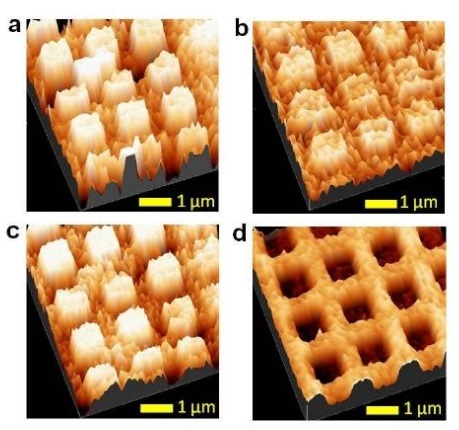March 02, 2017
Ferromagnets are commonly magnetized by either external magnetic fields or spin polarized currents. The manipulation of magnetization by spin-current occurs through the spin-transfer-torque effect, which is applied, for example, in modern magnetoresistive random access memory.
However, the current density required for the spin-transfer torque is of the order of 1x106A/cm2, or about 1x1025 electrons s-1 cm‑2. This relatively high current density significantly affects the devices’ structure and performance. In our work we demonstrate magnetization switching of ferromagnetic thin layers that is induced solely by adsorption of chiral molecules. In this case, about 1013 electrons per cm2 are sufficient to induce magnetization reversal. The direction of the magnetization depends on the handedness of the adsorbed chiral molecules.
The current work based on the chiral induced spin selective effect present a simple low-power magnetization mechanism operating at ambient conditions. The results has the potential to overcome the limitations of other magnetic-based memory technologies and to facilitate the fabrication of inexpensive, high-density memory and other spintronics elements.
The high level of energy dissipation associated with the present semiconductor-based integrated-circuit technology limits the operating frequency of the devices. Therefore, there is interest in new concepts that may solve this problem. One such concept that attracts considerable attention nowadays combines spins with electronics (spintronics). In principle, the application of spintronics should result in reducing power consumption of electronic devices and efficiency should be closer to the thermodynamic limit. Two major issues complicate the use of spintronics; material problems and the inefficiency in producing spin-polarized current.
Studying a new concept in which spin current is produced by using the spin selectivity in electron transport through chiral molecules, termed Chiral-Induced Spin Selectivity (CISS), Paltiel’s group from Jerusalem in collaboration with Naaman’s group from Weizmann were able to realize simple local spintronics devices.
For example, we demonstrated a simple magnetless optical and electrical magnetic memory working at ambient conditions using Si compatible process.
Nevertheless, the magnetization of the magnetic layer required high currents. This is due to the fact that ferrimagnets are commonly magnetized by either external magnetic fields or spin polarized currents. The manipulation of magnetization by spin-current occurs through the spin-transfer-torque effect, which is applied, for example, in modern magnetoresistive random access memory. The current density required for the spin-transfer torque is of the order of 1x106A/cm2, or about 1x1025 electrons s-1 cm-2. This relatively high current density significantly affects the devices’ structure and performance. In our recent work led by Oren Ben Dor a PhD student from Jerusalem, we demonstrate magnetization switching of ferromagnetic thin layers that is induced solely by adsorption of chiral molecules. In this case, about 1013 electrons per cm2 are sufficient to induce magnetization reversal. The direction of the magnetization depends on the handedness of the adsorbed chiral molecules. These results have the potential to overcome the limitations of other magnetic-based memory technologies and to facilitate the fabrication of inexpensive, high-density memory and other spintronics elements.
Oren Ben Dor, Shira Yochelis, Anna Radko, Kiran Vankayala, Eyal Capua, Amir Capua, See-Hun Yang, Lech Tomasz Baczewski, Stuart Stephen Papworth Parkin, Ron Naaman and Yossi Paltiel “Magnetization switching in ferromagnets by adsorbed chiral molecules without current or external magnetic field” NATURE COMMUNICATIONS|8:14567|DOI: 10.1038/ncomms14567















